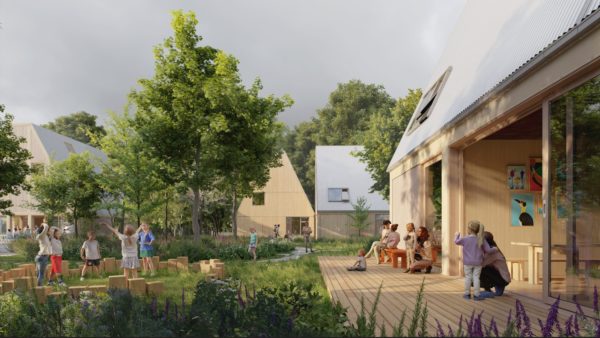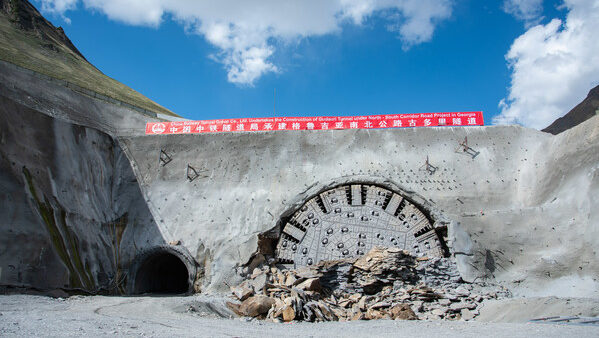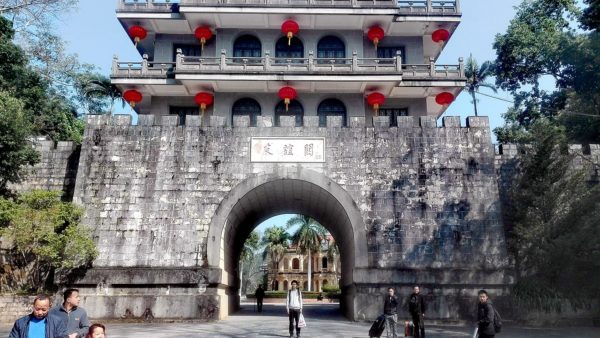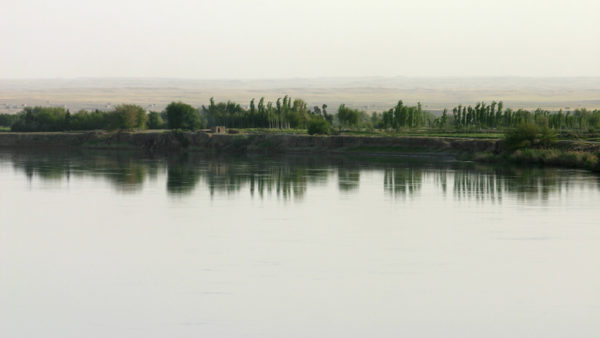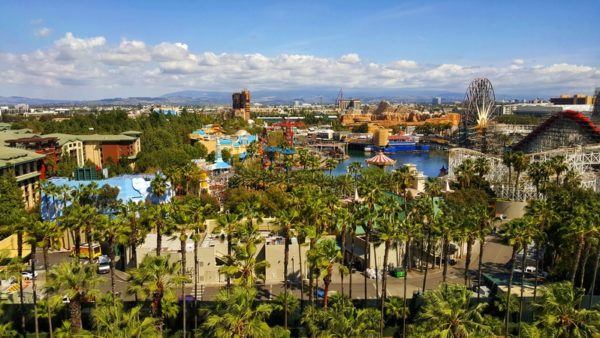With the 2018 World Cup in Russia getting underway this week (14 June), GCR’s sister site Construction Manager takes a look at stadiums playing host to the tournament. Of the 12 stadiums involved, seven around the country are newly constructed while another two have been extensively redeveloped.
1) Kaliningrad Stadium, Kaliningrad

Image Dreamstime.com/Irina Borsuchenko
- Capacity: 35,212
- Construction cost: £227m
- Opened: 2018
- Distance from Moscow: 770 miles
-
Contract: Crocus GroupArchitect: Wilmotte & Associés
Contractor: Crocus Group
- Architect: Wilmotte & Associés
One of the cheapest of all of Russia’s new World Cup grounds, Kaliningrad stadium has been built on October Island in the Pregolya River and was supposed to be part of a major regeneration of the area.
It was originally due to have a retractable roof and be able to hold 45,000 people but this has since been scaled down to 35,000. Construction started in September 2015, making it the last stadium to get underway. It opened in April 2018.
It will host four first-round group matches.
2) Luzhniki Stadium, Moscow

Image: Dreamstime.com/Scaliger
- Capacity: 81,006
- Construction cost: £309m
- Opened: 2018 (following redevelopment, originally opened 1956)
-
Contractor: Mosinzhproekt (2013-2017)Architect: SPeeCH, Mosinzhproekt
Contractor: Mosinzhproekt (2013-2017)
- Architect: SPeeCH, Mosinzhproekt
Originally known as the Central Lenin Stadium, the Luzhniki Stadium was built in just 450 days between 1955 and 1956 with a capacity of just over 100,000.
It was the central venue of the 1980 Moscow Olympics before being renovated and renamed in the 1990s. As part of its latest and largest-ever redevelopment, which began in 2013, the facade of the stadium was preserved but the stands were divided into two tiers with a thin strip of 102 private boxes in between, and the athletics track was removed.
A change in the seating meant that the original roof, also retained, had to be altered. An additional 7,000m2 of translucent sheets have been added around the inner edges to protect fans in the front rows. The whole roof has been reclad and lighting installed within it.
The stadium has 221,000m2 of floor space, making it one of the largest in the world.
Luzhniki hosts several group matches as well as several knockout games including one of the semi-finals and the final on 15 July.
3) Mordovia Arena, Saransk

Wiki Commons – By ÐрзÑнин
- Capacity: 44,442
- Construction cost: £224m
- Opened: 2018
- Distance from Moscow: 400 miles
-
Contractor: SDS – Upravlenie stroitelstvaArchitect: SaranskGrazhdanProekt
Contractor: SDS – Upravlenie stroitelstva
- Architect: SaranskGrazhdanProekt
Saransk is the smallest of the World Cup host cities and while ground was broken on the Mordovia Arena in 2010, it was not completed until late 2017 due to delays including a lack of funding.
Seating at the colourful stadium will be scaled back to around 28,000 after the competition. It will host matches during the group stages.
4) Nizhny Novgorod Stadium, Nizhny Novgorod

Image: Dreamstime.com/Ivas76
- Capacity: 45,331
- Construction cost: £221m
- Opened: 2018
- Distance from Moscow: 265 miles
- Contractor/architect: Stroytransgaz
The Nizhny Novgorod Stadium has what football’s governing body Fifa calls a "semi-transparent undulating façade". Inspired by the countryside of the Volga region, the circular design draws on wind and water.
Construction on the ground, which lights up at night, began in 2015. Encircled by concrete colonnades, the stadium has a flat roof, while seating has been divided into two tiers.
It will host group matches as well as a Last 16 knockout contest and the first of the quarter-finals on 6 July.
5) Rostov Arena, Rostov-on-Don

Image: Dreamstime.com/Andrew Arestov
- Capacity: 45,145
- Construction cost: £246m
- Opened: 2018
- Distance from Moscow: 690 miles
-
Contractor: Crocus GroupArchitect: Populous
Contractor: Crocus Group
- Architect: Populous
Five near perfectly preserved Second World War shells were discovered during the ground breaking for Rostov Arena in June 2013 and luckily while those were removed safely, it was one of a number of hitches involved in the project.
The stadium was substantially revised in March 2015 to bring down the cost of construction. Nearly nothing of the ambitious original design survived, being replaced with a more conventional bowl design.
The stadium will host group matches and a Last 16 knockout match.
6) Samara Arena, Samara

Image: Dreamstime.com/Aleksandr Blinov
- Capacity: 44,807
- Construction cost: £239m
- Opened: 2018
- Distance from Moscow: 655 miles
-
Contractor: PSO KazanArchitect: GUS SO TerrNIIgrazhdanproekt, PI Arena
Contractor: PSO Kazan
- Architect: GUS SO TerrNIIgrazhdanproekt, PI Arena
Originally set to be located to the south of the city in a nearly deserted area, the Samara Arena was relocated closer to the city centre.
Initially nicknamed the "spheroid" stadium, it is now known as the "Cosmos Arena" to reflect Samara’s long tradition in the aviation and space industries, the dome-shaped stadium is made up of a mesh of steel girders, although near-transparent polycarbonate cladding and night-time illumination were scrapped in order to save costs.
It was the last of the new stadiums to open its doors, in late April this year, and will host group matches, a Last 16 knockout match, and quarter-final 4 on 7 July.
7) St Petersburg Stadium, St Petersburg

Image: WikiCommons – by Ninara
- Capacity: 68,143
- Construction cost: £1.1bn (estimated)
- Opened: 2017
- Distance from Moscow: 425 miles
-
Contractor: Transstroi / MetrostroiArchitect: Kisho Kurokawa Architect & Associates
Contractor: Transstroi / Metrostroi
- Architect: Kisho Kurokawa Architect & Associates
At £1.1bn, the Krestovsky Stadium or Zenit Arena is one of the most expensive stadiums ever built –well above its original £190m budget.
Ground was broken in 2007 and construction was due for completion in 2009 but serious delays and a redesign, as well as the withdrawal of its original backer Gazprom meant it was finally completed in 2017.
Built from Kisho Kurokawa’s "The Spaceship" design, it has a sliding pitch and a retractable roof. It will host group games as well as a Last 16 knockout match, a semi-final, and the third v fourth play-off.
8) Volgograd Arena, Volgograd

Image: Dreamstime.com/Aleksei Filatov
- Capacity: 45,568
- Construction cost: £200m
- Opened: 2018
- Distance from Moscow: 585 miles
-
Contractor: StroytransgazArchitect: PI Arena, GMP Architekten
Contractor: Stroytransgaz
- Architect: PI Arena, GMP Architekten
The Volgograd Arena has been built on the site of the site of what used to be Central Stadium, built in 1958. The stadium, wrapped in steel latticework, is particularly notable for its cabled roof, which is designed to recall the spokes of a bicycle wheel.Â
It will host group matches only.
9) Yekaterinburg Stadium

Image: Dreamstime.com/Nobilior
- Capacity: 35,696
- Construction cost: £150m
- Opened: 1953 (temporary stands and roof installed for 2018)
- Distance from Moscow: 1,090 miles
-
Contractor: Sinara DevelopmentArchitect: ABD Architect, PI Arena
Contractor: Sinara Development
- Architect: ABD Architect, PI Arena
Originally known as Central Stadium, Yekaterinburg Arena was built between 1953 and 1957 and redeveloped between 2007 and 2011.
For the World Cup, temporary extra seating has been incorporated outside the stadium perimeter behind both goals to bring it up to the minimum of 35,000 people that Fifa rules demand a World Cup venue can accommodate. It will host group matches only.Â
Top image: Moscow’s Luzhniki Stadium Stadium (Dreamstime/Scaliger)





